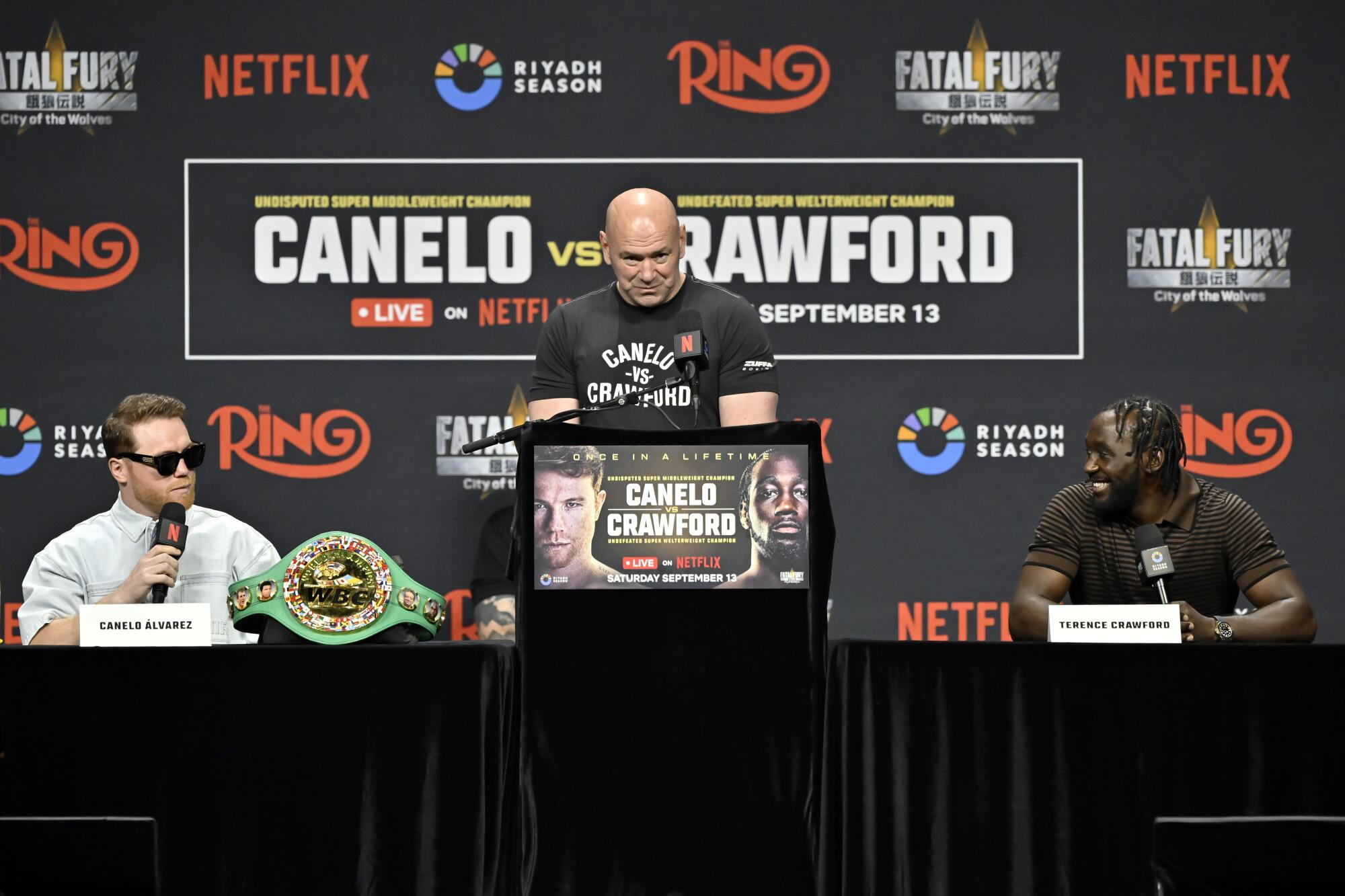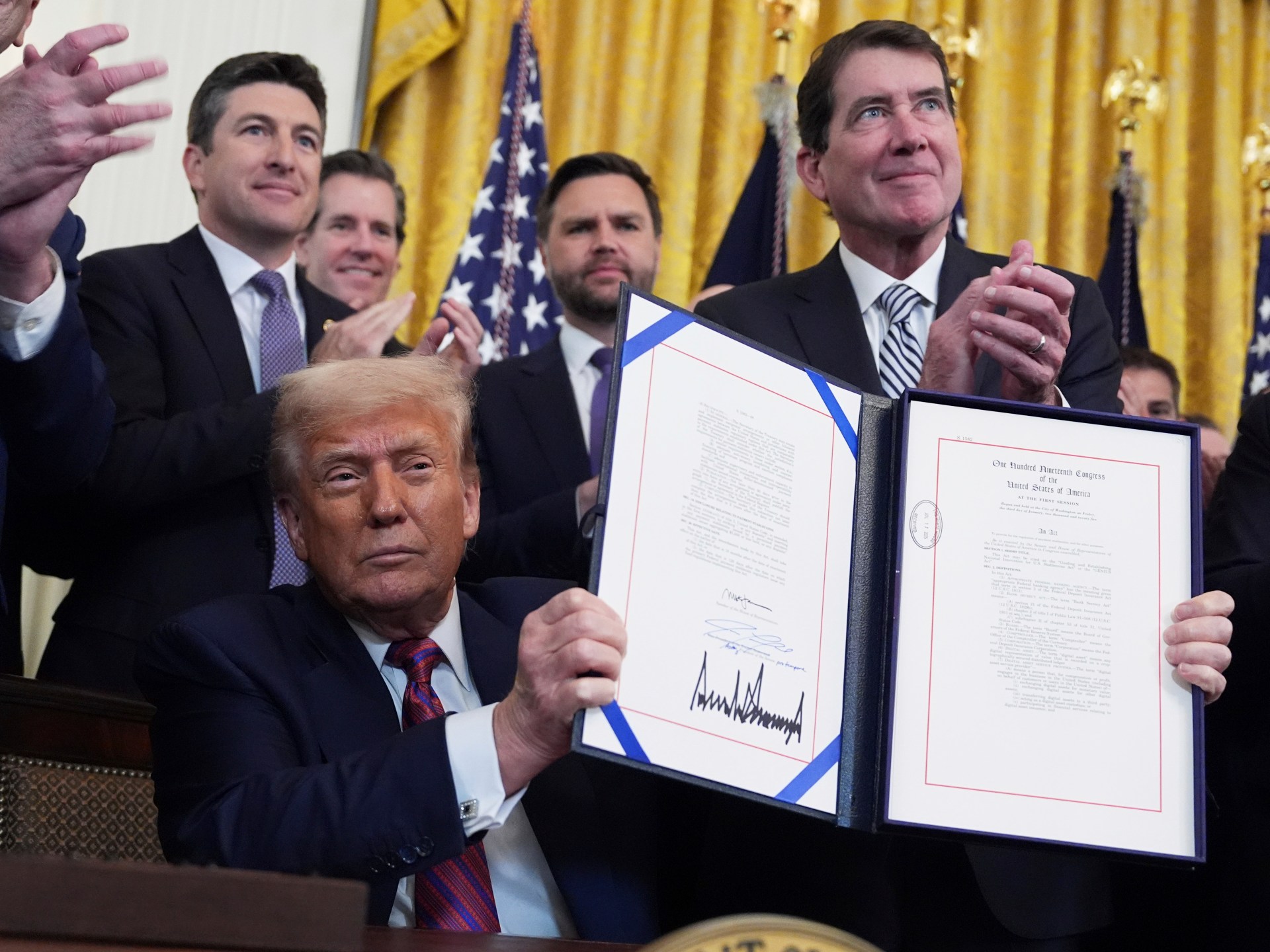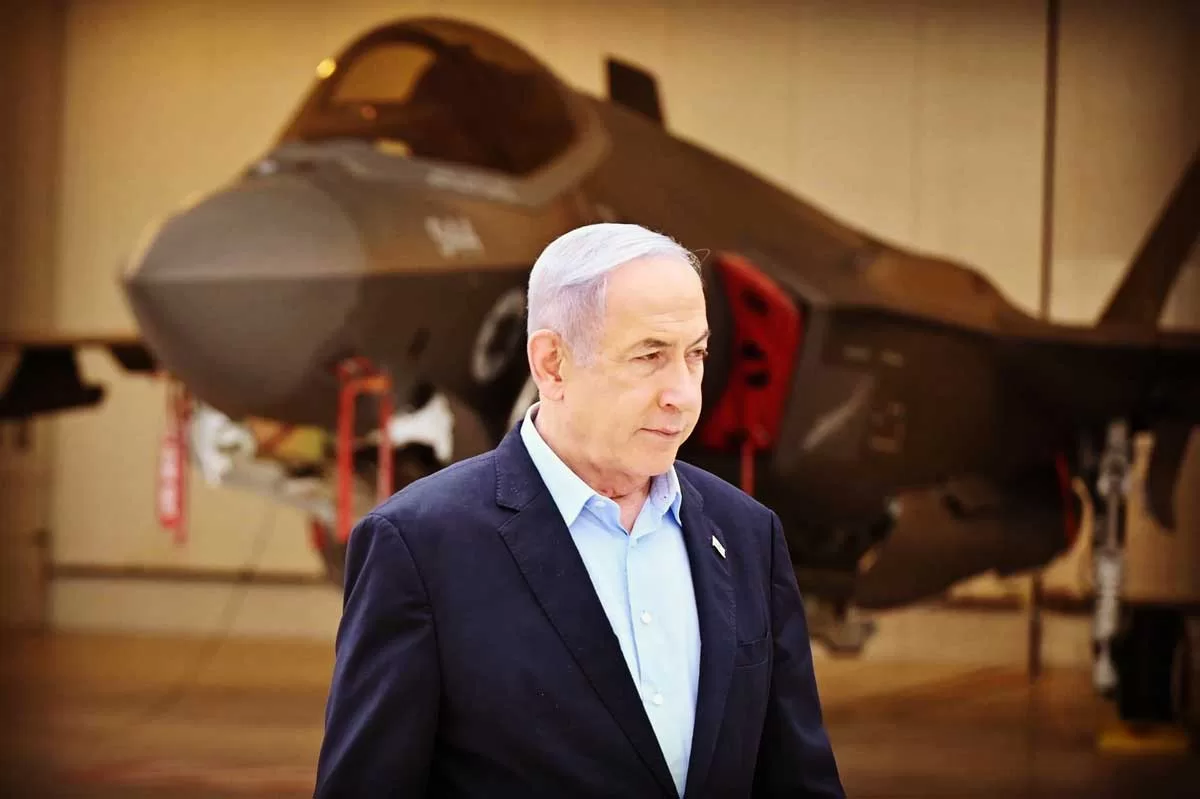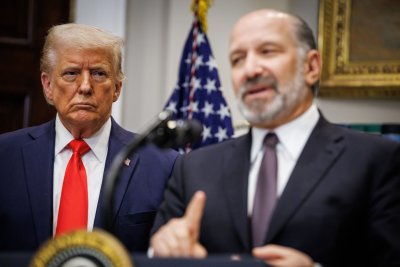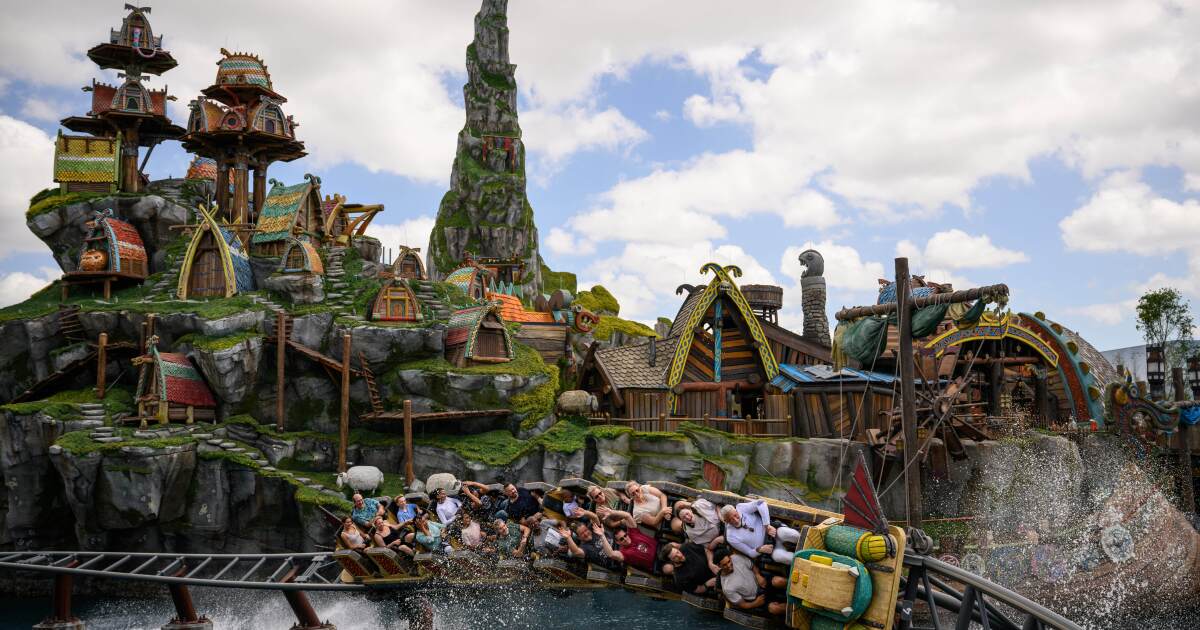Saul ‘Canelo’ Alvarez reflects on 20 years of boxing dominance
RENO, Nevada — The history of Mexican boxing features names that transcend generations. From Julio César Chávez, recognized as the pinnacle of Mexican boxing, to legendary figures such as Juan Manuel Márquez, Rubén ‘Púas’ Olivares, Salvador Sánchez, Ricardo ‘Finito’ López and Carlos ‘Cañas’ Zárate — all have proudly carried the name of Mexican flag to the peak of the boxing world.
The tradition of Aztec dominance has been continued in a big way by Saúl “Canelo” Álvarez, who on Oct. 29 will celebrate a historic 20-year professional career that began when he was just 15 years old, when he made his professional debut against Abraham González. Two decades later, with a legacy built on titles and big stages, Álvarez paused to reflect on his development from red-headed teenager who dreamed of being the best in the world to the current king of Mexican boxing with 63 victories.
Canelo Álvarez, left; UFC CEO Dana White, center; and Terence Crawford, right, speak during a news conference at at T-Mobile Arena on June 27.
(David Becker / Getty Images for Netflix)
“I’ve achieved everything in boxing, imagine how satisfying that is for me,” Álvarez told L.A. Times en Español during his training camp in Reno, Nev.
The celebration has already been planned and, like everything else involving Álvarez, it will be private but “on a grand scale.” The magnitude will likely depend on whether he emerges victorious when he defends his four belts against the undefeated Terence Crawford (41-0, 31 KOs) Saturday (6 p.m., Netflix), at Allegiant Stadium in Las Vegas.
“I think I’ve done some really good things in boxing and I’m very proud of that kid who started out with the dream of being the best in the world,” said the 35-year-old from Jalisco.
That kid, as his brother, Ricardo, recalls, was no different from any other teen in Guadalajara, except for an unusual obsession: to succeed in a brutal and demanding sport. His journey began in local gyms, under the tutelage of Chepo Reynoso and his son, Eddy, who saw extraordinary potential. It was there that Canelo Álvarez heard the words that would forever mark his destiny.
Boxer Canelo Álvarez, center, poses alongside his trainers Chepo Reynoso, left, and Eddy Reynoso, right, at MGM Grand in Las Vegas in 2018.
(Ethan Miller / Getty Images)
“‘With the talent you have, you’ll get wherever you want to go,’ is what they always told me, and it stuck in my mind,” Canelo said, recalling his early days with Chepo, his trainer since he was 14 years old.
Two decades later, Canelo says that advice is still the message he would repeat to himself if he could travel back in time. Because those words not only fueled his hunger, they gave him conviction.
“I would just tell that kid what he already knows, that ‘you’re going to get wherever you want to go,’” Canelo said.
Two decades later, that kid not only fulfilled his promise, but exceeded it. He became a champion in multiple divisions, a global icon and, above all, a man who continues to look ahead.
The story of Canelo Álvarez is not just that of a boxer, but of a dream fulfilled through discipline, sacrifice and faith. And yet, as Ricardo often says, “he still has a long way to go.”
Canelo’s journey has not been improvised or meteoric, but rather a project shaped by patience and discipline. Eddy, who has also been Canelo’s trainer since adolescence, recalls constantly learning alongside Canelo.
“In 2000, I started training boxers with my dad — first amateurs and then professionals. We formed a group of kids and teenagers, and that’s where Saúl came from,” Eddy said.
That connection, forged in the gyms of Jalisco, was the beginning of one of the most successful partnerships in boxing history. Eddy was inspired by figures such as Julián Magdaleno and Rafael Mendoza, coaches who instilled in him the ambition to be someone great in the sport.
Canelo Alvarez celebrates with his family after defeating John Ryder at Akron Stadium in 2023 in Zapopan, Mexico.
(Hector Vivas / Getty Images)
“I always imagined myself being someone important in boxing,” Eddy said. “And with Saúl, we’ve achieved that.”
In his two-decade career, Canelo has moved up in weight class, stage and demand. He has done so by facing Miguel Cotto, Floyd Mayweather Jr. and Gennady Golovkin, against whom he fought a memorable trilogy.
Although he suffered his first career defeat in 2013 against Mayweather, it was the fight that paved the way for his success not only as a champion, but also as an entrepreneur and businessman.
However, it is the second fight against Golovkin in September 2018 that holds a special place in Canelo’s heart.
“It was very emotional for me because of many things surrounding the fight,” Canelo said. “Confirming that I was better than him, everything that had been said. [It] was a very special moment.”
Eddy agrees that that night was a high point.
“I saw him very happy when he beat Golovkin in the second round. Also, when he beat Miguel Cotto, or even in his early four-round fights. Every win has had meaning, but that victory over ‘GGG’ was special.”
Little by little, Canelo learned from his mistakes and cleared his path to become the economic and sporting powerhouse he is today. Along the way, he fell out with Golden Boy Promotions and Oscar De La Hoya in 2020, with whom he first became a superstar, and made a miscalculation by moving up to light heavyweight and losing for the second time in his career, this time to Dmitry Bivol in 2022.
The darkest moment of his career came in 2018 when he was suspended for six months by the Nevada Athletic Commission for testing positive for the banned substance clenbuterol. According to Canelo’s team, this was because of contaminated meat he ate during a visit to Mexico. Clenbuterol is sometimes used in cattle feed to increase muscle mass.
Beyond the belts, the million-dollar purses and the fame, Canelo’s career has been supported by his unwavering family, particularly during the difficult times.
“It’s been a long 20-year career,” said Ricardo, one of Canelo’s six older brothers. “We’ve always been united in supporting him. He’s become the star of boxing, the face of boxing. We’re very proud of him, and he’s very proud of what he’s achieved and what he still has to achieve. He was born for this, I’ve always told him, he was born for this.”
The family has celebrated every victory and accompanied him through every obstacle. For them, the fight against Crawford is not just a sporting challenge, it’s also a family reunion.
“We are going to celebrate with great happiness, with the family, more than anything else united, with friends and team. All together, as always,” said Ricardo.
Canelo Alvarez hits Jaime Munguia during a super middleweight title fight on May 4, 2024, in Las Vegas.
(John Locher / Associated Press)
In the Álvarez family’s memory, there are moments that define their history, anecdotes that serve as symbols of everything that was to come. Ricardo remembered one of them with particular clarity: the night they went to the movies to see “Cinderella Man,” the 2005 film about James J. Braddock, the boxer who persevered during the Great Depression and fought for a world title.
As they left the room, Ricardo asked his younger brother, “Can you imagine fighting on a stage like that one day?”
Canelo recalled telling his brother: “I wanted to succeed like that boxer, but with a different ending, fighting in world championships on the biggest stages.”
With a career that has taken Canelo to Madison Square Garden, the MGM Grand and T-Mobile Arena in Las Vegas, Canelo recognizes he made the goal come true.
“Now that we’ve talked about it after all these years, he says to me, ‘And what do you think? I’ve already fought on the best stages.’ And yes, he’s achieved everything,” Ricardo said.
Canelo Álvarez, left, with brother, Ricardo.
(HANDOUT / INSTAGRAM)
Saturday’s setting will once again be monumental: Allegiant Stadium in Las Vegas. Awaiting him there will be Crawford, who is considered by many to be the best pound-for-pound fighter today.
For Eddy, this fight represents a clash of styles and power.
“A huge fight is coming between two of the world’s greatest powerhouses, Mexico and the United States. We’re going to show that the Mexican school is the best,” Eddy said.
Ricardo also recognizes the magnitude of the challenge: “[Canelo] has had big fights, with Cotto, Golovkin, Mayweather. But you can feel what this fight means in the atmosphere. It’s the biggest fight today, and I’m sure it’s going to surprise people.”
Canelo, for his part, takes it in stride.
“It means a lot to me to continue fighting in big fights, in a stadium as important as Allegiant,” he said. “I’m happy and excited to be there.”
It’s still unclear how exactly Canelo will celebrate Oct. 29 and his two decades of boxing.
Eddy envisions joining the celebration with a resounding victory.
“We’re going to win this fight by knockout,” Eddy promises, “and then we’re going to have a big party in Mexico.”
This article first appeared in Spanish via L.A. Times en Español.
